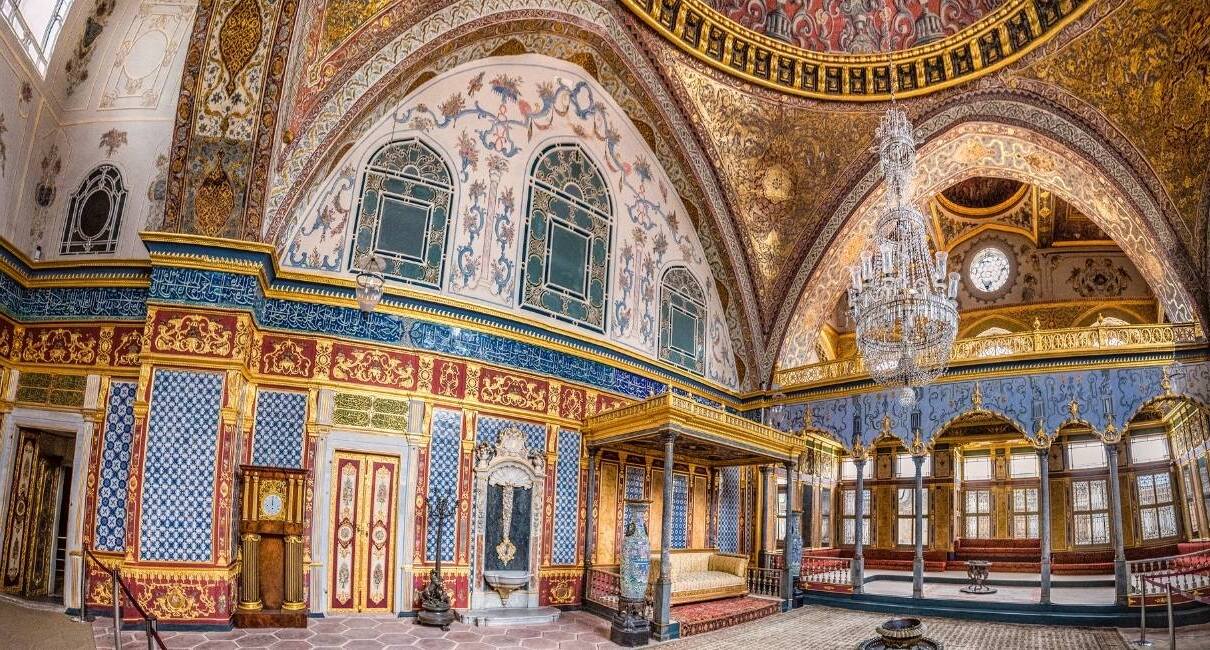
Ottoman architecture, with its distinctive domes, minarets, and intricate tile work, stands as a testament to a rich cultural heritage that spanned over six centuries. This architectural style, which evolved under the influence of Byzantine, Persian, and Islamic designs, not only showcases the empire's power and sophistication but also its ability to harmonize diverse artistic expressions. From the grandeur of the Suleymaniye Mosque in Istanbul to the elegance of the Topkapi Palace, each structure tells a unique story of innovation, spirituality, and the pursuit of beauty. Ottoman architecture is more than just buildings; it's a fascinating journey through history, reflecting the empire's vast reach and its impact on the world. As we delve into 25 captivating facts about this architectural marvel, readers will gain insights into the genius behind the empire's most iconic landmarks and the legacy they left behind.
Understanding Ottoman Architecture
Ottoman architecture, a distinctive blend of Islamic, Persian, and Byzantine styles, emerged in the 14th century and flourished until the 20th century. This architectural style is renowned for its grand mosques, madrasas (Islamic schools), palaces, and baths, showcasing the cultural richness and technological advancements of the Ottoman Empire.
-
Inception: Ottoman architecture took root in Bursa and Edirne, cities that were capitals of the Ottoman Empire before Istanbul.
-
Influences: This style was heavily influenced by the Byzantine architecture of Constantinople, Islamic architectural traditions from the Seljuk Turks, and Persian innovations.
Key Features of Ottoman Architecture
Ottoman buildings are easily recognizable by their key features, which include large domes, spacious interiors, and elaborate decorations.
-
Domes: The central dome, often flanked by smaller semi-domes, is a hallmark of Ottoman mosques, creating a vast, open interior space.
-
Minarets: Slim towers called minarets are another defining feature, from which the call to prayer is announced.
-
Iznik Tiles: Brightly colored tiles from Iznik with intricate floral and geometric designs adorn the interiors of many Ottoman structures.
-
Courtyards: Many Ottoman mosques include a large courtyard, surrounded by a colonnaded peristyle.
Notable Examples of Ottoman Architecture
Several buildings exemplify the grandeur and intricacy of Ottoman architectural design.
-
Hagia Sophia: Originally a Byzantine church, Hagia Sophia was converted into a mosque by the Ottomans, symbolizing the fusion of Byzantine and Islamic architectural elements.
-
Süleymaniye Mosque: Designed by the famous architect Mimar Sinan, it is considered one of the most beautiful mosques in Istanbul.
-
Topkapi Palace: Serving as the administrative center and royal residence, Topkapi Palace is a sprawling complex with lush gardens and richly decorated rooms.
Mimar Sinan: The Architect of the Empire
Mimar Sinan, the chief Ottoman architect for nearly 50 years, left an indelible mark on Ottoman architecture.
-
Master Architect: Sinan's innovative designs and engineering solutions elevated the aesthetic and functional aspects of Ottoman buildings.
-
Legacy: He designed over 300 structures, including mosques, bridges, and schools, many of which are still standing today.
Ottoman Architecture Beyond Mosques
Ottoman architectural excellence is not confined to religious buildings; it extends to various types of structures.
-
Bridges: The Mehmed Pasha Sokolovic Bridge in Bosnia and Herzegovina is an example of Ottoman bridge engineering, blending functionality with aesthetic appeal.
-
Caravanserais: These roadside inns provided lodging and other amenities for travelers and traders, facilitating commerce across the empire.
-
Public Baths: Ottoman baths, or hamams, were not only places for bathing but also social centers, beautifully decorated with marble and tiles.
Preservation and Influence
Ottoman architecture has left a lasting legacy, influencing building designs in various parts of the world.
-
World Heritage Sites: Several Ottoman buildings have been designated as UNESCO World Heritage Sites, recognizing their cultural significance.
-
Influence on Modern Architecture: Elements of Ottoman design can be seen in contemporary architecture, especially in regions that were once part of the Ottoman Empire.
-
Preservation Efforts: Efforts are underway to preserve and restore historic Ottoman buildings, ensuring their survival for future generations.
Ottoman Architecture in Popular Culture
Ottoman architecture has captured the imagination of people around the world, often featured in films, literature, and art.
-
Films and TV Shows: Ottoman palaces and mosques often serve as stunning backdrops in historical dramas and documentaries.
-
Literature: Many novels set in the Ottoman Empire vividly describe the empire's architectural wonders, bringing them to life for readers.
-
Art and Photography: Artists and photographers are drawn to the intricate details and grand scales of Ottoman structures, inspiring their work.
The Global Reach of Ottoman Architecture
The influence of Ottoman architecture extends far beyond the borders of modern-day Turkey.
-
Balkans: Countries in the Balkans feature numerous mosques and buildings with Ottoman architectural elements, a testament to the empire's reach.
-
Middle East: In places like Damascus and Cairo, Ottoman influence is evident in the design of mosques and public buildings.
-
North Africa: Ottoman rule in North Africa introduced distinct architectural styles to the region, particularly in cities like Algiers and Tunis.
The Future of Ottoman Architecture
As we look to the future, the preservation and study of Ottoman architecture remain vital for understanding the empire's cultural and historical impact.
-
Educational Programs: Universities and cultural institutions offer programs focused on Ottoman art and architecture, fostering a new generation of scholars and preservationists.
-
Technological Advances: Modern technology, including 3D scanning and virtual reality, offers new ways to experience and study Ottoman architectural treasures, ensuring their legacy endures.
A Final Sketch on Ottoman Architectural Marvels
Ottoman architecture, with its grand mosques, elegant palaces, and intricate designs, stands as a testament to a rich cultural heritage. These structures, blending Islamic and Byzantine architectural elements, not only showcase the empire's power but also its sophistication and artistic prowess. From the majestic Hagia Sophia, repurposed with minarets, to the sprawling Topkapi Palace, each building tells a story of conquest, faith, and innovation. Architects like Mimar Sinan pushed boundaries, creating spaces that were both functional and breathtakingly beautiful. Today, these architectural marvels continue to fascinate historians, architects, and travelers alike, offering a window into the past that's as captivating as the structures themselves. Ottoman architecture, in essence, is more than just buildings; it's a lasting legacy of a bygone era that continues to inspire and awe.
Was this page helpful?
Our commitment to delivering trustworthy and engaging content is at the heart of what we do. Each fact on our site is contributed by real users like you, bringing a wealth of diverse insights and information. To ensure the highest standards of accuracy and reliability, our dedicated editors meticulously review each submission. This process guarantees that the facts we share are not only fascinating but also credible. Trust in our commitment to quality and authenticity as you explore and learn with us.


